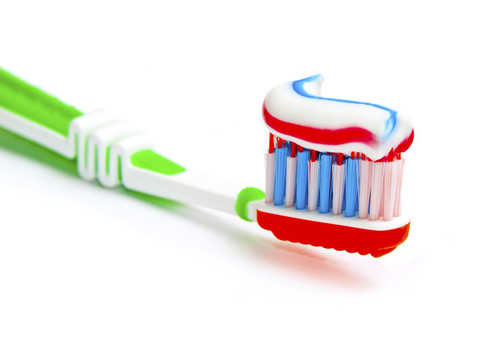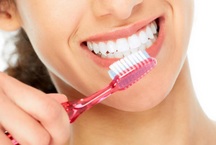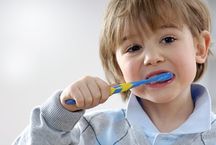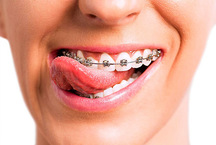
Fluoridation of teeth and the use of toothpastes, which include fluorine compounds in the form of soluble salts, is often recommended in children and adults as a preventive measure for the development of caries. However, this substance is far from harmless to the human body, its overabundance can lead to the development of certain pathologies. Therefore, it is impossible to expressly speak about the harm and benefits of fluoride in toothpaste and other hygiene products, without having complete information.
The benefits of fluoride compounds in toothpastes
It has been scientifically proven that fluorine compounds have an anticariogenic effect, and this substance also affects the functioning of the whole organism.
The use of fluoride:
- Fluoride strengthens tooth enamel. The composition of the tooth enamel includes calcium hydroxyapatite, the active fluoride ions are associated with it with the formation of fluorapatite. This compound is more resistant to the influence of waste products of cariogenic microorganisms.
- Fluorine is a natural antiseptic. Its compounds have an antibacterial effect.
- It prevents the formation of dental deposits.
- Increases the remineralizing effect of saliva. Fluorine has a positive effect on the functioning of the salivary glands, significantly accelerating the production of saliva. The phosphorus and calcium ions contained in saliva penetrate the tooth enamel and prevent the development of a carious process.
- Fluorine is involved in metabolic processes. Microscopic doses of fluoride favorably affect the metabolism and the general condition of the body. Scientists have shown that the dosed use of fluoride during pregnancy helps to reduce the depth of the natural depressions (fissures) on the surface of the teeth of the unborn child, which are the predominant zone of caries localization.
However, despite all the positive effects, before using fluoridated toothpaste, you should consult with your doctor, find out the level of fluoride in water and strictly adhere to all the recommendations of a specialist. Do not forget that fluoridation is one of the methods of caries prevention, which should be used with caution.
Fluorine damage to the human body
Excess fluoride in the human body can lead to the development of many negative reactions from various systems.
- Fluorine has a neurotoxic effect.especially pronounced in young children. His overabundance can cause a violation of speech abilities, significantly reduce the ability to learn foreign languages, mathematics, affect memory.
- One of the reasons hormonal changes is a high content of fluoride in consumed products, water and hygiene products. Fluorine ions accumulate in the tissues of the thyroid gland, which disrupts the synthesis of thyroid hormones and a decrease in testosterone levels, which can cause the development of many deviations, including infertility.
- Fluorine excess is the only cause of fluorosiswhich has two forms of manifestation:
- on the part of the dental system, the disease is manifested by the development of the so-called spotted tooth enamel;
- Bone tissue affected by fluorosis becomes fragile as a result of excessive mineralization and an imbalance between organic and inorganic compounds, such a pathology increases the risk of fractures and increases joint mobility.
4. Some scientists adhere to the theory that in high concentration fluorine ions are carcinogenic substances.
When choosing oral hygiene products, in particular fluoride toothpastes, you should not forget that a certain amount of this substance is injected from fluorinated water every day; food cooked on it; vegetables and fruits. In regions with a high content of fluoride in water, the use of fluoride toothpastes for the prevention of caries is not recommended.
Fluoride compounds in toothpastes
For the first time, fluoride toothpaste was released more than 100 years ago (more precisely in 1914) in the USA. However, it was only in the 50s of the last century that such pastes were improved and found to be useful. Today, fluoride pastes are the most common dentifrices.
Pure fluorine is a gaseous substance; therefore, it can be included in pastes only in the form of soluble salts, fluorides. At a temperature of about 37 degrees and contact with saliva, such a compound disintegrates and the active fluoride ions are released.
The most common fluoride compounds that make up toothpastes
The structure of modern toothpastes includes the following fluorine compounds:
- Pasta with sodium monofluorophosphate ineffective with quick brushing of teeth (less than 3 minutes), since the active fluoride ions from this compound are released very slowly.
- Sodium fluoride - quickly dissociates (decomposes) into ions, therefore, has a higher efficiency.
- Olaflur (aminofluoride) - one of the latest developments, after using a paste based on it on the tooth enamel, a film remains, which gives fluoride ions for a long time.
- Aluminum fluoride.
- Tin fluoride.
How to protect the body from exposure to fluoride when brushing your teeth
In order for the active fluoride ions not to harm the body, you must follow a few simple rules:
- Examine the packaging of toothpaste when buying, pay attention to what kind of fluoride compound and in what concentration is included in its composition.
- Before using a fluorinated agent is necessary consult with a specialistPerhaps the level of fluoride in the water of the region of residence is sufficient and such a paste will only bring harm.
- Do not use fluoridated pasta for children under 6 years old. At this age, children do not fully have the skills to brush their teeth, which can cause ingestion of a large amount of hygiene products.
- When planning a vacation in other regions You should pay attention to the level of natural fluoride in drinking water. With normal or elevated content, it is necessary to abandon the use of fluorinated pastes for the period of rest.
- To minimize the amount of fluoride that enters the body while brushing teeth the amount of toothpaste should not exceed the size of a small pea.
In addition to pastes, fluorine is a part of rinses, special gels and chewing plates, as well as dental products that are used in a professional cabinet. Therefore, the choice of a method for preventing the development of caries should be left to the dentist and strictly adhere to all of its recommendations.
Related Literature:
Vertuhova M.L. "Composition and purpose of toothpastes", 2004
Lutskaya I.K. “Effect of fluoride toothpastes on the acid resistance of enamel. —Clinical Implantology and Dentistry ”, 1997, № 3
Splieth C.H., Baekken S., Rosin M. "Effectivness of different topical fluoride application in schoolchildren." - EJPD, 2000, No. 1 (3)
L.R.Sarap, E.A. Podzorova, N.V.Terentieva, Department of Pediatric Dentistry, ASMU, Barnaul "Comparative study of toothpastes containing aminofluoride and sodium fluoride".






